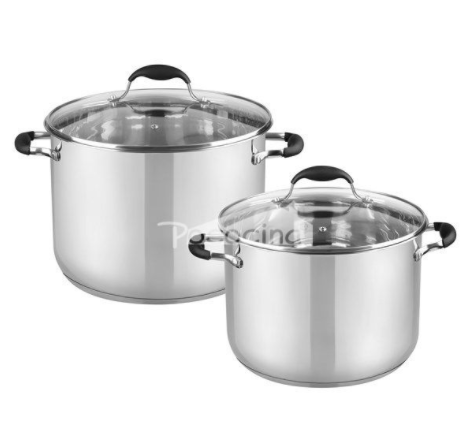Email us at Hailey@topkitchen.cn or Call us today at +86-158 1491 0345
To learn how we can help you with your kitchenware and cookware needs.
Compared with iron pans, stainless steel pots have the advantages of being less rusty and easy to take care of. If it is a new stainless steel pot that you have just gotten, do you want to use it directly or open the pot?
Obviously, it is a big mistake to use it directly for two reasons. First, in the manufacturing process of stainless steel pots, industrial oils are used on the surface. These industrial oils will slightly penetrate into the pots. It is not safe to use them directly or clean them with detergents.
Secondly, stainless steel pots, especially woks, will inevitably stick to the pot during use. If you skip the step of boiling the pot, it will inevitably become stickier and stickier.
But, do you know how to cook a stainless steel pot? It doesn't matter if you don't know, let me summarize the cooking method for everyone.

1. Wash the pot with water and dish washing liquid. Wipe the surface of the pot with a dish cloth or sponge. Wipe the inside and outside of the pot thoroughly. Then rinse off the foam with warm water and set aside to dry. Oil is more likely to adhere to a clean pot.
2. Choose oil with high smoke point for boiling. Sesame oil, vegetable oil, peanut oil and soybean oil are all suitable for boiling. The oil with a high smoke point can better deal with high temperatures during the boiling process, and adhere to the pot more "tightly", so that the anti-sticking effect is better and the effect lasts longer.
3. Pour an appropriate amount of oil into the pot and cover the bottom of the pot thinly. Most pots need 2 tablespoons of oil for maintenance. Hold the handle of the pot and shake it back and forth so that the edges of the pot are also covered with oil. Your goal is to make the oil cover the inner surface of the pot as evenly as possible, so that the pot is fully maintained.
4. Boil the pot over medium heat for 2 minutes. Don't use high heat at the beginning, it will cause uneven heating of the pan and may also scorch the oil. The medium heat is not only more "mild" for the pot and oil, but also ensures a uniform heating rate.
5. When the oil starts to smoke, remove the pot from the stove. When thin smoke comes out of the surface of the pot, the oil is burnt. It may take 3 to 5 minutes from firing to smoke. As soon as the pot smokes, move it to the stove where there is no fire.

6. Let the oil dry for 30 minutes. If you don't have time to wait for the oil to cool to room temperature, let it at least warm it up so that it doesn't feel hot to the touch. Let the oil cool in order to ensure that the remaining steps of boiling can be carried out safely.
7. Pour all the oil in the pot into the sink. If you don't want to dump the oil, you can also use a kitchen paper towel to absorb the oil, and then throw the paper towel away with the kitchen waste. There may be residual oil in the pot at this time, but it doesn't matter.
8. Wipe the inside of the pot with a paper towel. Roll the kitchen towel into a ball and wipe the inside of the pot with a circular motion. This will not only absorb the excess oil, but also give the pot a noticeable luster. When the pot becomes oily and irritating, it means that it is almost wiped, and the anti-sticking layer on the surface of the pot has also formed.
For the use of a new pot, it is necessary to open the pot. The above-mentioned method of boiling the stainless steel pot arranged by Meishengfa hopes to be helpful to you. If you have any needs, you can contact us.